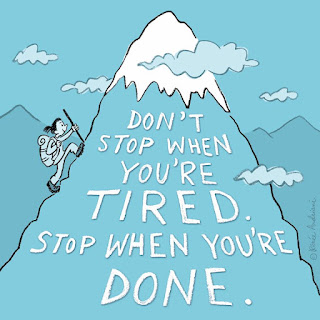Crooked trails
>
When I'm in the mountains, it's not often that I follow a straight trail - at least not for very long. Shown attached is the track of a favorite hike near my home. In the maze of trails that covers the hills, it's clear there are some that are more direct than others. The track I chose to follow on this hike (outlined in red) is very crooked, for some good reasons.
Sometimes the terrain demands a certain path; the trail is made irregular to bypass obstacles or find safer and easier routes to ascend and descend. I've been on hikes when I've thought to myself, "Who made this trail? Why in the world are they taking this route, when I can tell I'm going way out of the way?" But then with perspective I've come to recognize that there was a very valid reason - bypassing a dangerous cliff, avoiding an extremely steep or deeply wooded section, etc. And I've learned to trust and thank the wisdom of the trailbuilder.
Sometimes I've recognized that a trail is irregular or unusual because there's something interesting to be viewed or experienced along the way. By following a non-direct route, I'm treated to an unusual vista or a natural phenomenon that I would not have experienced otherwise. In the case of the second attached image, zoomed in from the first, the trail deliberately wanders through a delightful wooded section, very distinct from the surrounding areas, that is a peaceful and lovely escape. See a short video I made a few years ago here:
I once had the opportunity to lay out several miles of trails on a mountainside that would be used by groups of youth at a Church property. It was fascinating to explore the mountain, looking for routes that were appropriate to the abilities of the anticipated visitors, finding interesting things to see and experience along the way, and avoiding obstacles that could prove difficult or dangerous. It was a fascinating learning experience for me.
Occasionally on a hike, there are multiple options to get from "point A" to "point B." One may be more direct and steep, for those who are confident with that kind of terrain; another may involve switchbacks and be longer, but less strenuous and risky, for those who are more comfortable with a more gradual ascent. Both are valid, and allow the hiker to choose his or her preference.
If your only goal is to get somewhere quick, you can choose the most direct route (that the terrain will allow). But in many cases, by doing that you miss some of the best attractions and experiences.
Sometimes in life, to get from where we are to where we would like to be, we can take a fairly direct route. But sometimes we choose to take a more gradual approach, or we have that path chosen for us by circumstances, and we can be blessed by that. When we learn to trust the Trailbuilder who went before us and recommended the way, or when we pay attention to experienced guides who direct us along the trail, we are blessed to avoid danger and to witness and experience things we never anticipated. I #GiveThanks for the privilege of each new day wandering the paths of life.




Comments
Post a Comment